Abstract
1. Skeletal muscle samples were obtained by needle biopsy from one of two depths of the m. gluteus medius in a group of twenty race-trained thoroughbred horses. 2. The content of carnosine was determined in each muscle sample, part of which was used for histochemical analysis. Fibres were classified as type I, type IIA or type IIB on the basis of the pH dependent lability of the myosin ATPase reaction. 3. Muscle samples with a higher type II fibre section area (FSA) have a higher carnosine content than those with a higher type I FSA. 4. Multiple linear regression analysis was used to estimate the mean carnosine content of individual fibre types. The results estimated a mean carnosine content in type I fibres of 54 mmol (kg dry muscle (DM))-1, in type IIA fibres 85 mmol (kg DM)-1 and in type IIB fibres 180 mmol (kg DM)-1. 5. Based on the estimated values of single fibre carnosine content, there was close concordance between the estimated and the measured carnosine content of mixed fibre samples. 6. It would appear from this and other studies that carnosine has an important role as a physico-chemical buffer in equine middle gluteal muscle and that this is greatest in type IIB fibres, where it may account for up to 50% of physico-chemical buffering of H+ produced by muscle in the pH range 7.1-6.5.
Full text
PDF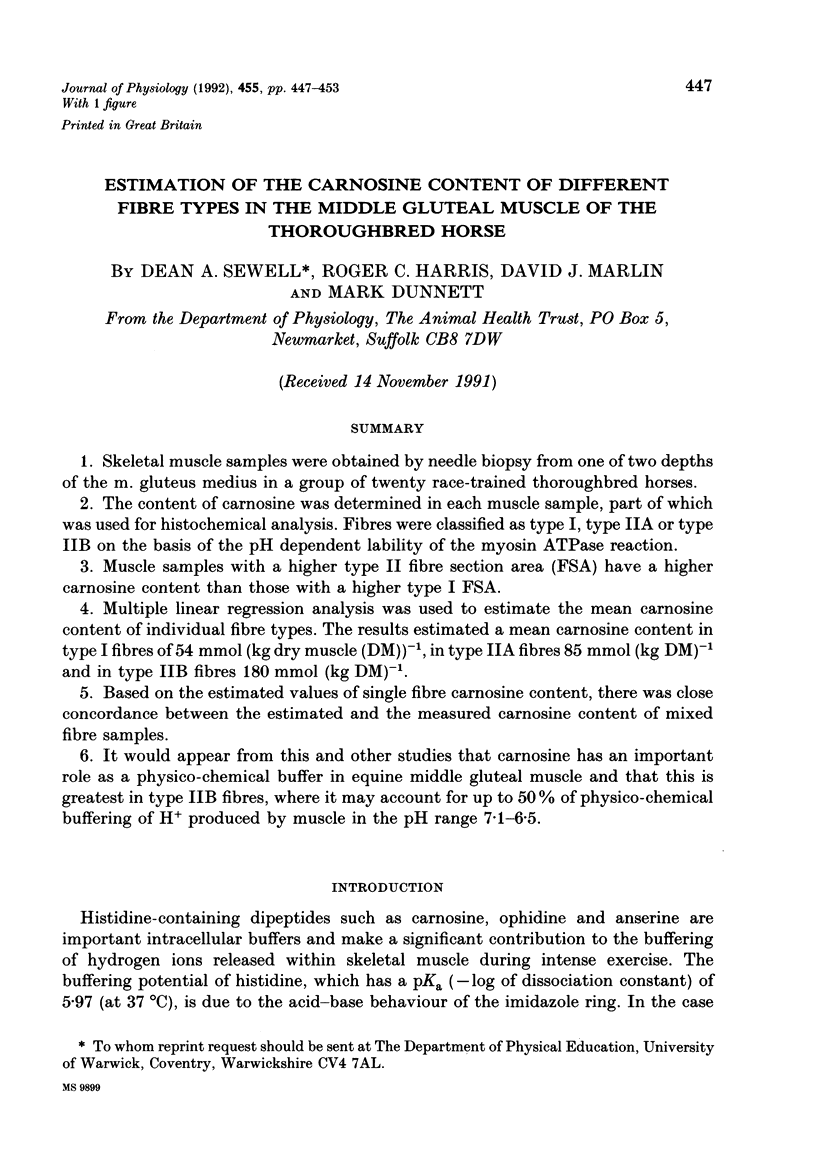
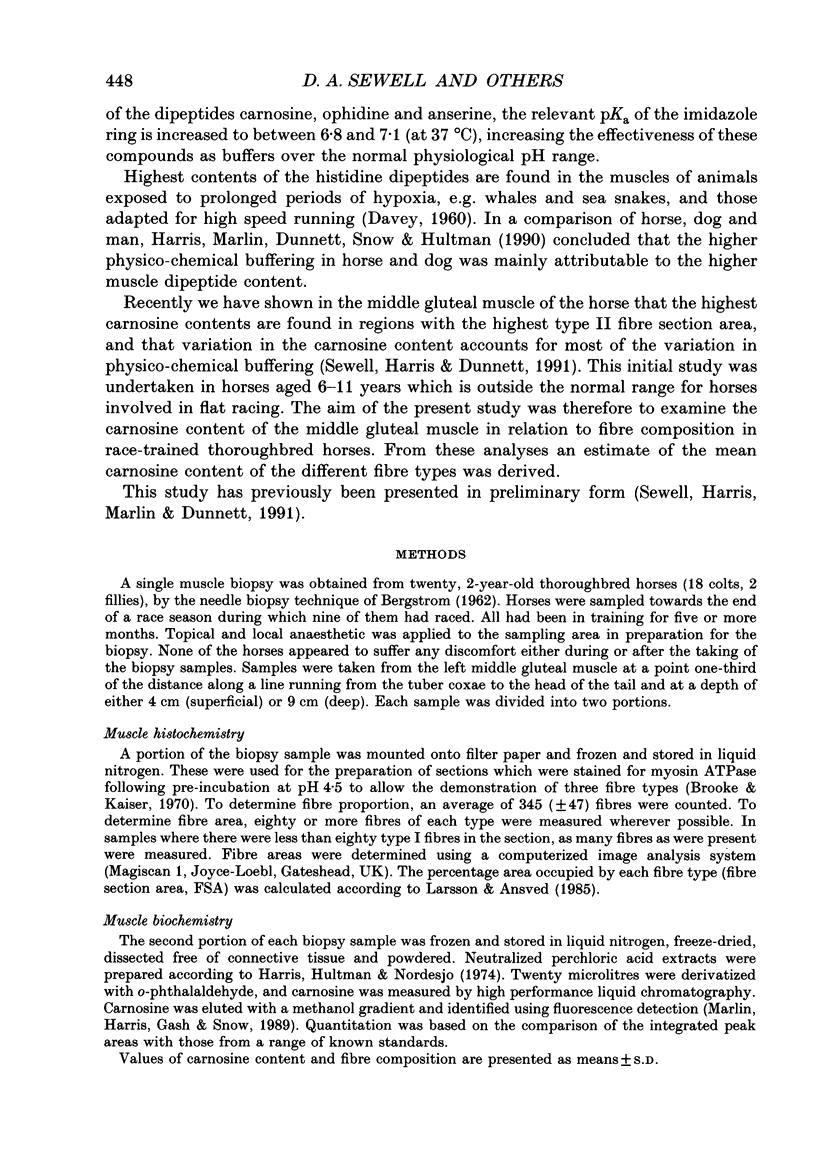
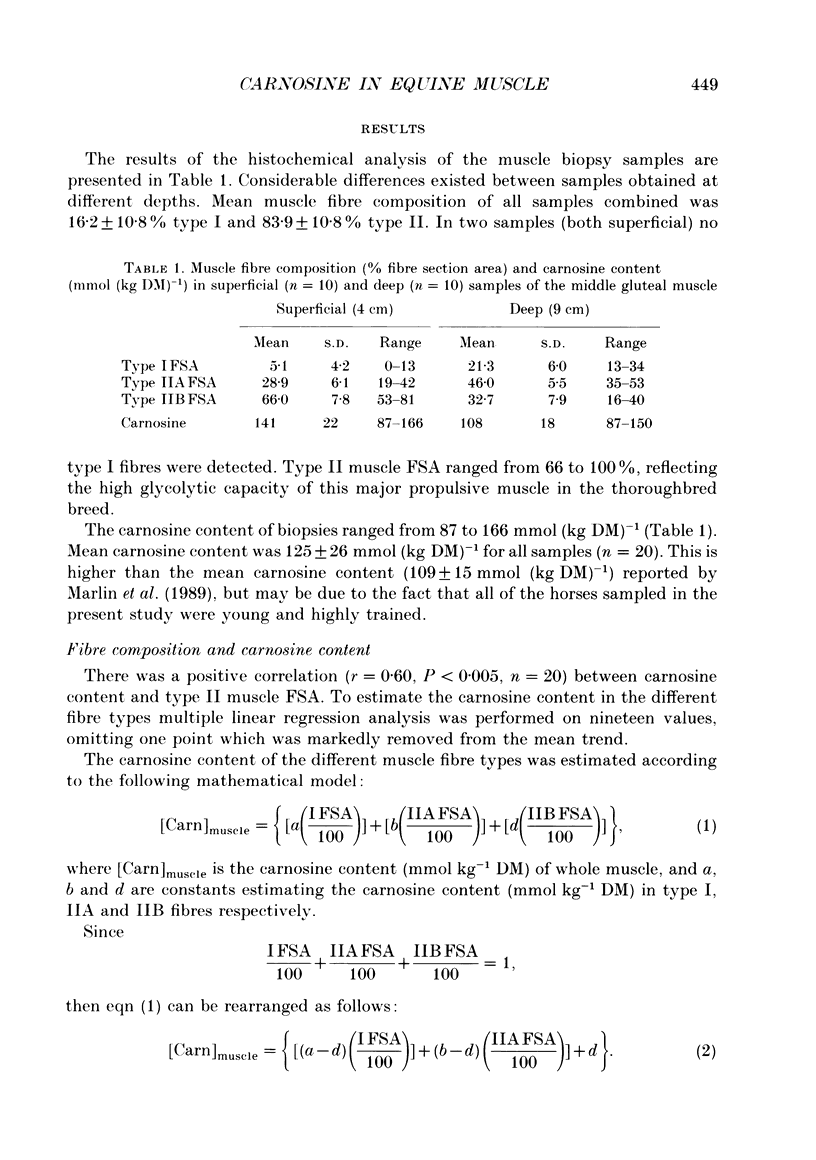
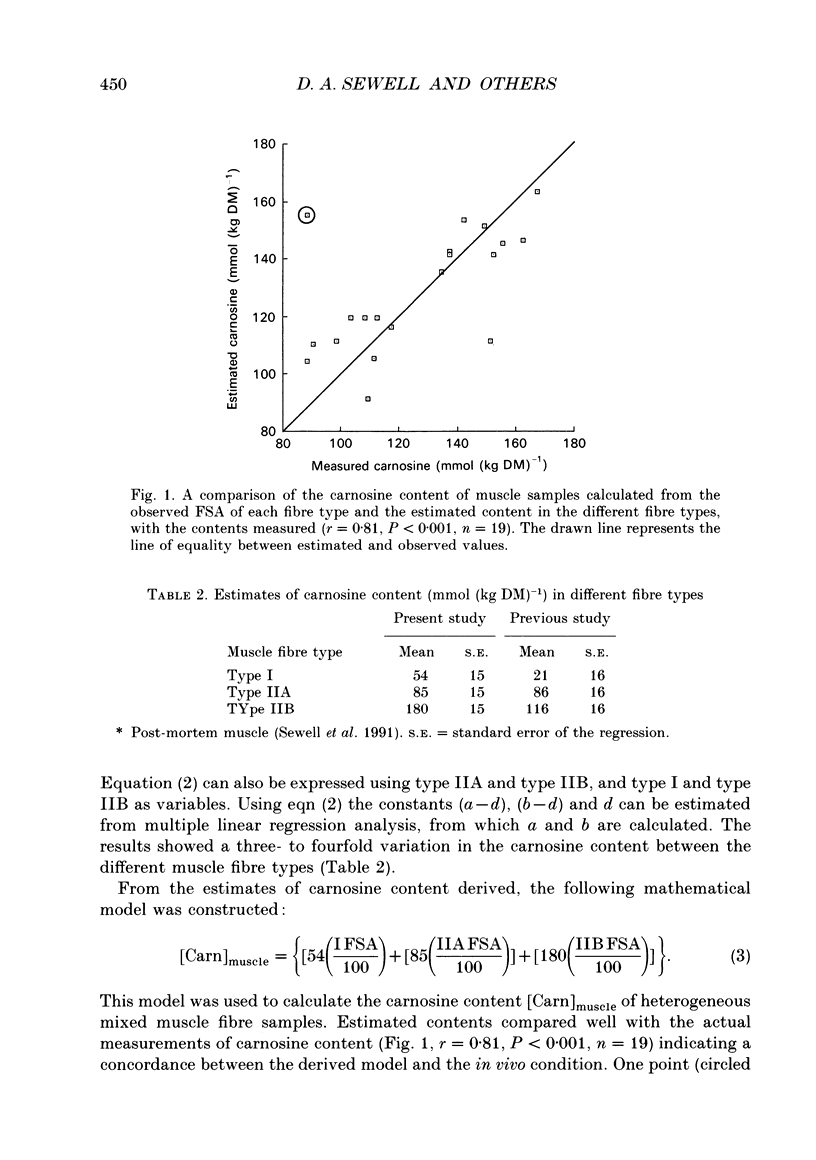
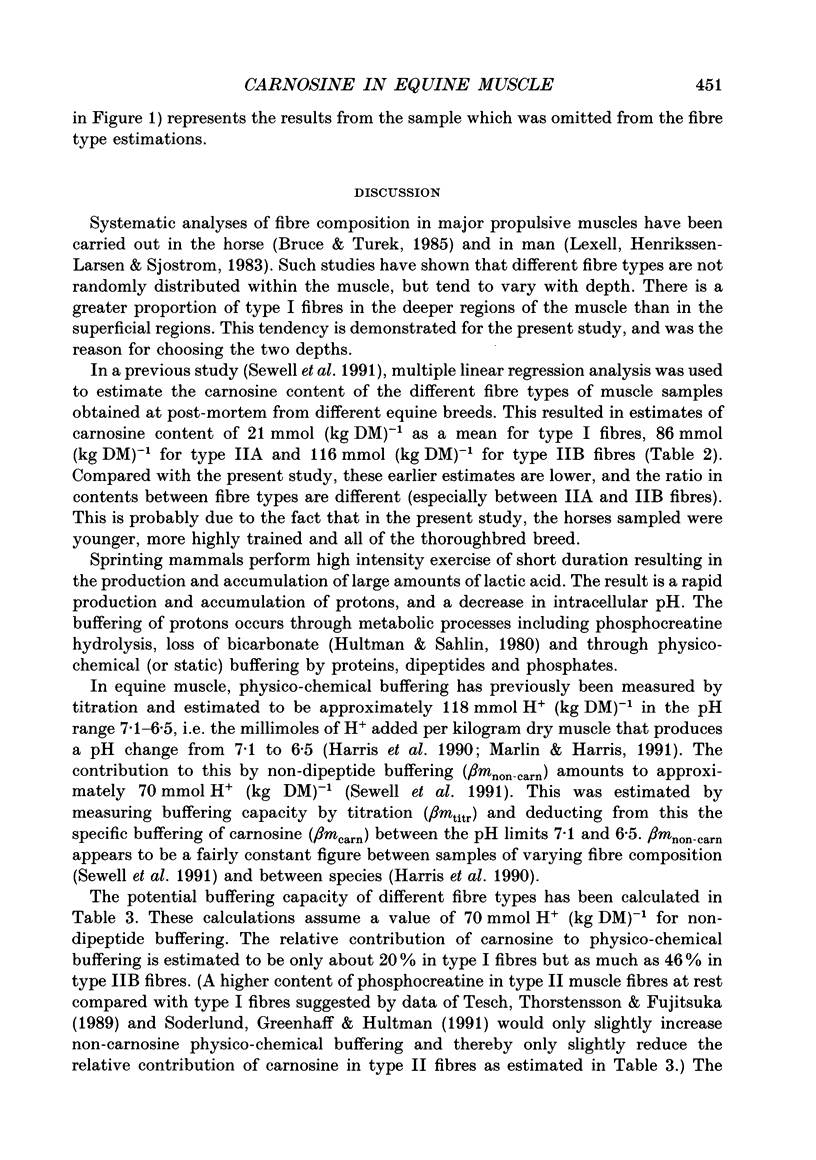
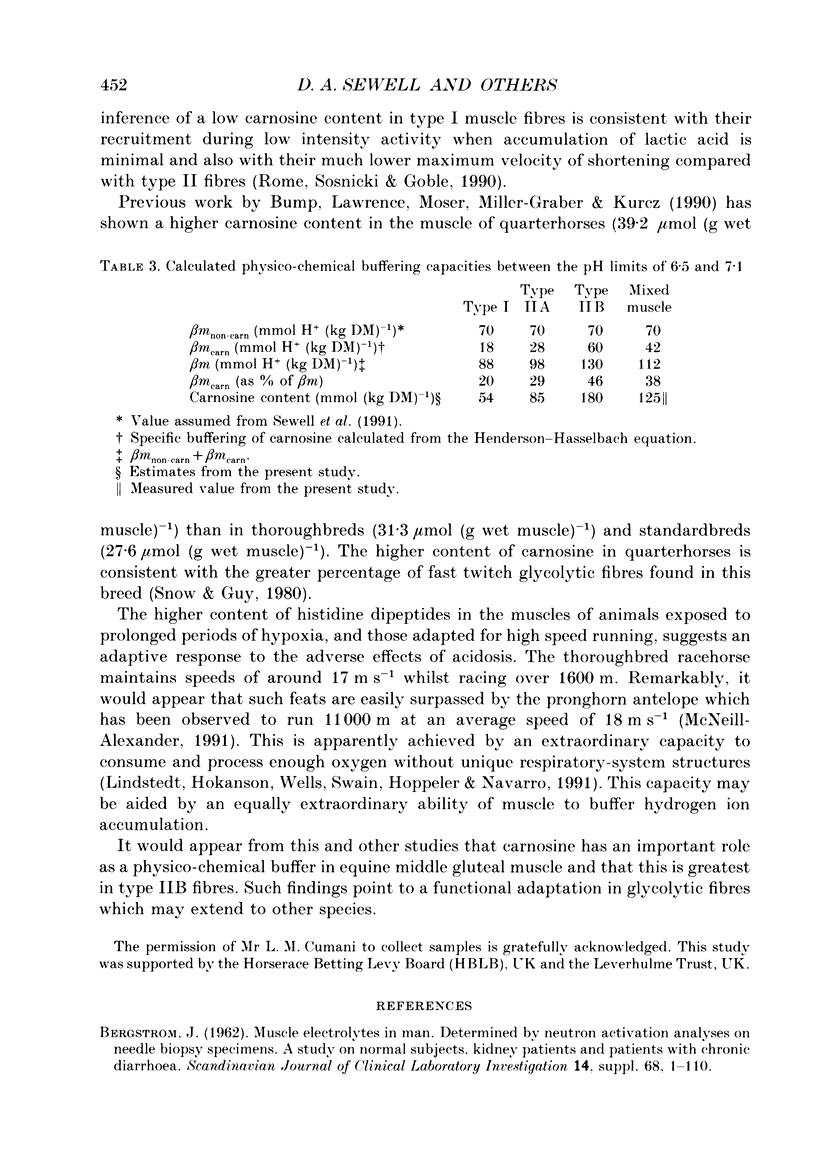
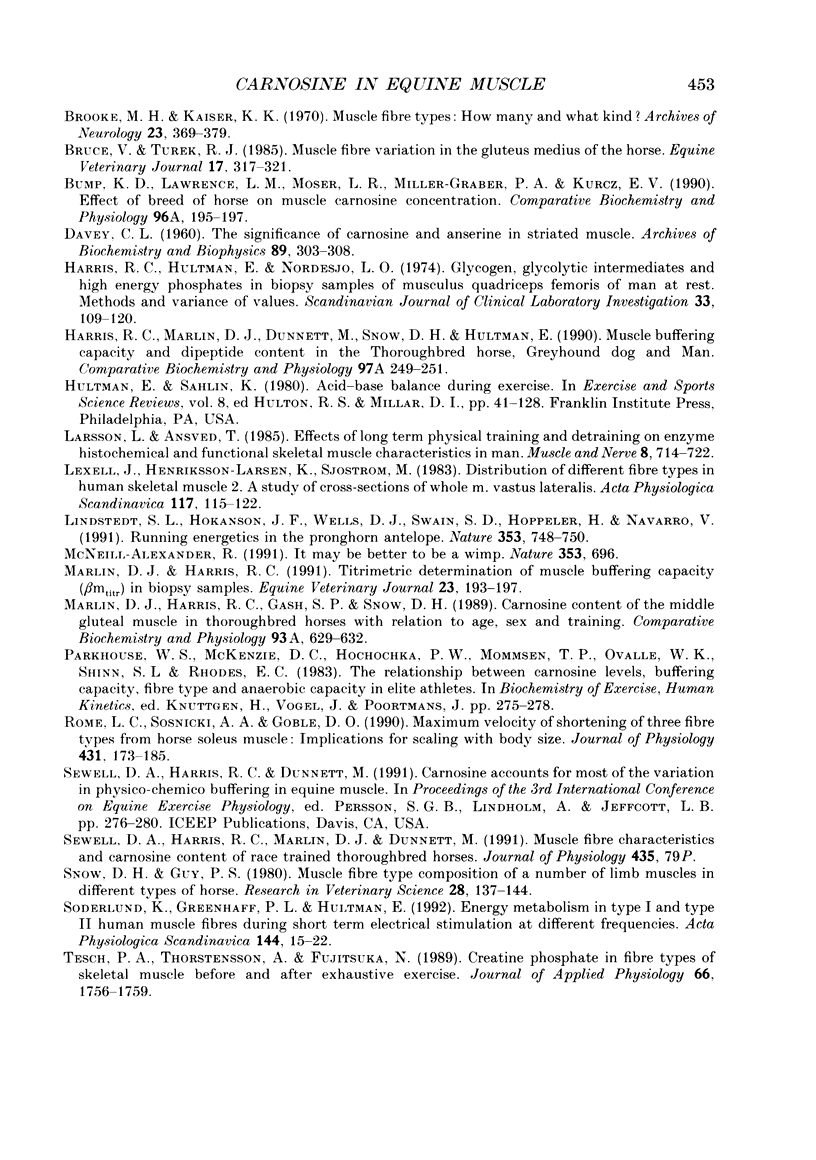
Selected References
These references are in PubMed. This may not be the complete list of references from this article.
- Brooke M. H., Kaiser K. K. Muscle fiber types: how many and what kind? Arch Neurol. 1970 Oct;23(4):369–379. doi: 10.1001/archneur.1970.00480280083010. [DOI] [PubMed] [Google Scholar]
- Bruce V., Turek R. J. Muscle fibre variation in the gluteus medius of the horse. Equine Vet J. 1985 Jul;17(4):317–321. doi: 10.1111/j.2042-3306.1985.tb02508.x. [DOI] [PubMed] [Google Scholar]
- Bump K. D., Lawrence L. M., Moser L. R., Miller-Graber P. A., Kurcz E. V. Effect of breed of horse on muscle carnosine concentration. Comp Biochem Physiol A Comp Physiol. 1990;96(1):195–197. doi: 10.1016/0300-9629(90)90064-y. [DOI] [PubMed] [Google Scholar]
- DAVEY C. L. The significance of carnosine and anserine in striated skeletal muscle. Arch Biochem Biophys. 1960 Aug;89:303–308. doi: 10.1016/0003-9861(60)90059-x. [DOI] [PubMed] [Google Scholar]
- Harris R. C., Hultman E., Nordesjö L. O. Glycogen, glycolytic intermediates and high-energy phosphates determined in biopsy samples of musculus quadriceps femoris of man at rest. Methods and variance of values. Scand J Clin Lab Invest. 1974 Apr;33(2):109–120. [PubMed] [Google Scholar]
- Harris R. C., Marlin D. J., Dunnett M., Snow D. H., Hultman E. Muscle buffering capacity and dipeptide content in the thoroughbred horse, greyhound dog and man. Comp Biochem Physiol A Comp Physiol. 1990;97(2):249–251. doi: 10.1016/0300-9629(90)90180-z. [DOI] [PubMed] [Google Scholar]
- Hultman E., Sahlin K. Acid-base balance during exercise. Exerc Sport Sci Rev. 1980;8:41–128. [PubMed] [Google Scholar]
- Larsson L., Ansved T. Effects of long-term physical training and detraining on enzyme histochemical and functional skeletal muscle characteristic in man. Muscle Nerve. 1985 Oct;8(8):714–722. doi: 10.1002/mus.880080815. [DOI] [PubMed] [Google Scholar]
- Lexell J., Henriksson-Larsén K., Sjöström M. Distribution of different fibre types in human skeletal muscles. 2. A study of cross-sections of whole m. vastus lateralis. Acta Physiol Scand. 1983 Jan;117(1):115–122. doi: 10.1111/j.1748-1716.1983.tb07185.x. [DOI] [PubMed] [Google Scholar]
- Lindstedt S. L., Hokanson J. F., Wells D. J., Swain S. D., Hoppeler H., Navarro V. Running energetics in the pronghorn antelope. Nature. 1991 Oct 24;353(6346):748–750. doi: 10.1038/353748a0. [DOI] [PubMed] [Google Scholar]
- Marlin D. J., Harris R. C., Gash S. P., Snow D. H. Carnosine content of the middle gluteal muscle in thoroughbred horses with relation to age, sex and training. Comp Biochem Physiol A Comp Physiol. 1989;93(3):629–632. doi: 10.1016/0300-9629(89)90023-6. [DOI] [PubMed] [Google Scholar]
- Marlin D. J., Harris R. C. Titrimetric determination of muscle buffering capacity (beta mtitr) in biopsy samples. Equine Vet J. 1991 May;23(3):193–197. doi: 10.1111/j.2042-3306.1991.tb02753.x. [DOI] [PubMed] [Google Scholar]
- Rome L. C., Sosnicki A. A., Goble D. O. Maximum velocity of shortening of three fibre types from horse soleus muscle: implications for scaling with body size. J Physiol. 1990 Dec;431:173–185. doi: 10.1113/jphysiol.1990.sp018325. [DOI] [PMC free article] [PubMed] [Google Scholar]
- Snow D. H., Guy P. S. Muscle fibre type composition of a number of limb muscles in different types of horse. Res Vet Sci. 1980 Mar;28(2):137–144. [PubMed] [Google Scholar]
- Söderlund K., Greenhaff P. L., Hultman E. Energy metabolism in type I and type II human muscle fibres during short term electrical stimulation at different frequencies. Acta Physiol Scand. 1992 Jan;144(1):15–22. doi: 10.1111/j.1748-1716.1992.tb09262.x. [DOI] [PubMed] [Google Scholar]
- Tesch P. A., Thorsson A., Fujitsuka N. Creatine phosphate in fiber types of skeletal muscle before and after exhaustive exercise. J Appl Physiol (1985) 1989 Apr;66(4):1756–1759. doi: 10.1152/jappl.1989.66.4.1756. [DOI] [PubMed] [Google Scholar]


